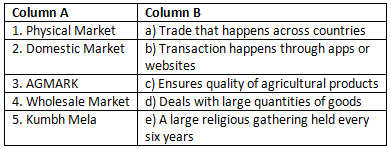Multiple Choice Questions (MCQS)
Q1: What is the primary function of a market?
a) To provide education
b) To buy and sell goods and services
c) To offer loans
d) To promote traditions
Q2: What is one of the main problems with the barter system?
a) Difficulty in measuring value
b) High transportation costs
c) Lack of demand for goods
d) Limited goods to exchange
Q3: Which of the following is an example of an online market?
a) Haat
b) A local grocery store
c) An app for shopping
d) A farmer’s market
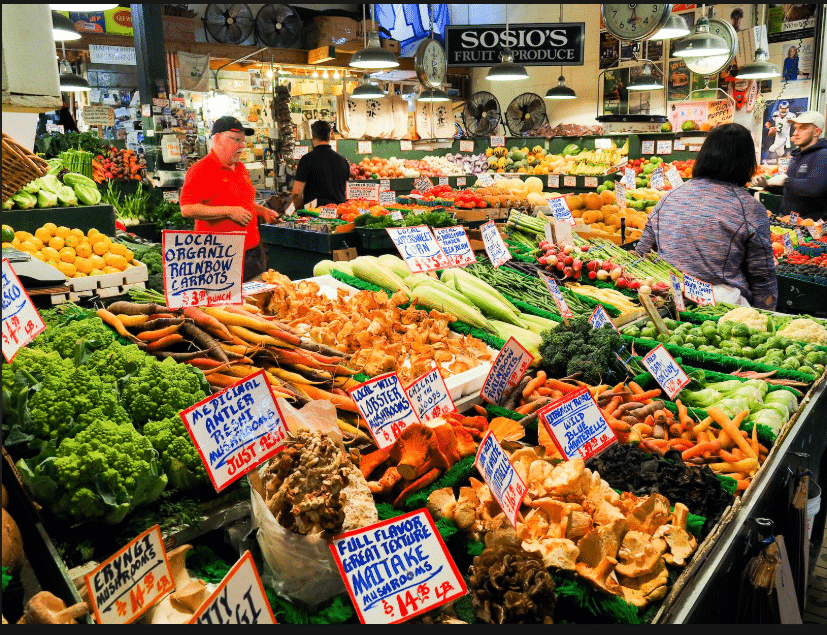
Market
Q4: Which market is used for exchanging large quantities of goods?
a) Retail market
b) Online market
c) Wholesale market
d) Digital market
Q5: What term refers to the amount of goods and services that sellers are willing to offer at different prices?
a) Demand
b) Supply
c) Transaction
d) Price
Q6: Which of these products is commonly traded in domestic markets?
a) Aircraft
b) Gold
c) Fruits and vegetables
d) Electronics
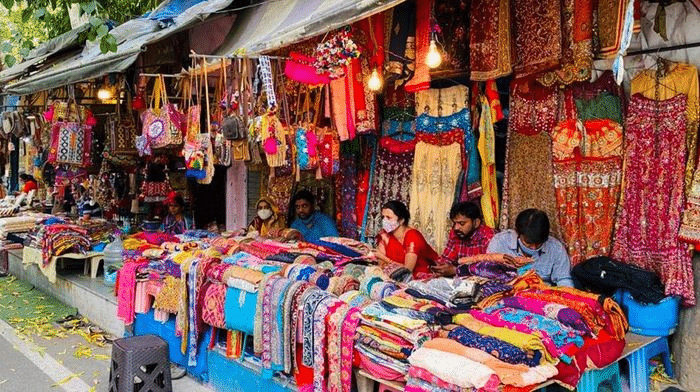
Wholesale Market of Cloth
Q7: What is the role of government in markets?
a) To ensure fair pricing and quality
b) To limit the supply of goods
c) To increase demand
d) To make all decisions for sellers
Q8: What is one of the benefits of a market for society?
a) It decreases competition among sellers
b) It encourages innovation and better products
c) It reduces the availability of goods
d) It promotes only local products
Q9: Which type of market allows goods to be bought from international sellers?
a) Domestic market
b) Wholesale market
c) International market
d) Retail market
Q10: Which of these is an example of a public good?
a) A private restaurant
b) A public park
c) A commercial store
d) A private gym
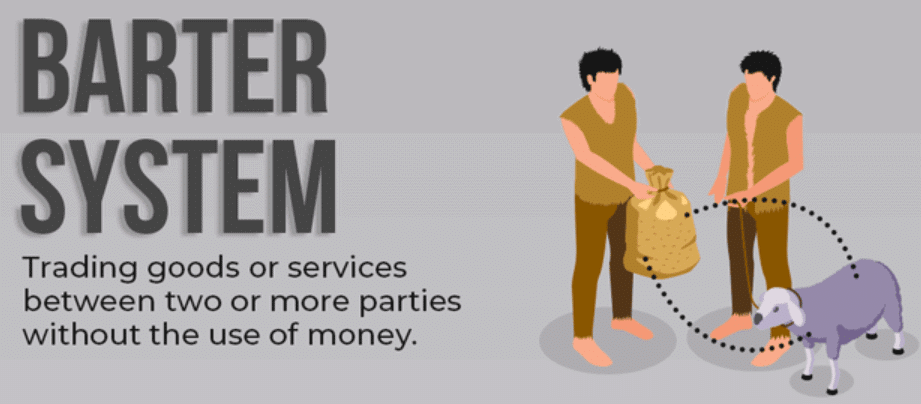
Barter System
Fill in the Blanks
Q1: The barter system had the problem of ________, where both parties had to want what the other had.
Q2: A market where buyers and sellers meet in person to exchange goods is called a ________ market.
Q3: A market where transactions happen over apps or websites is known as an ________ market.
Q4: ________ refers to the quantity of goods that buyers want to buy at different prices.
Q5: The process of ________ involves setting rules to ensure fair pricing, quality, and safety in markets.
Q6: A market where goods are bought in large quantities and sold to smaller retailers is called a ________ market.
Q7: The ________ is a mark that ensures the quality of agricultural products like honey and vegetables.
Q8: The ________ Mela is a major pilgrimage event that takes place every six years at four river sites in India.
Q9: ________ is a method of assessing the quality of goods by looking at reviews, certifications, and personal experience.
Q10: The ________ market refers to the buying and selling of goods within a country’s boundaries.
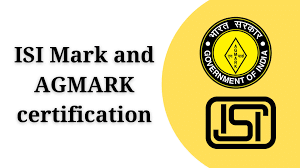
IGI Mark
Very Short Answer Questions
Q1: What is a physical market?
Q2: What does “demand” mean in the context of markets?
Q3: What is an online market?
Q4: What is the role of a wholesaler in the market?
Q5: What is AGMARK?
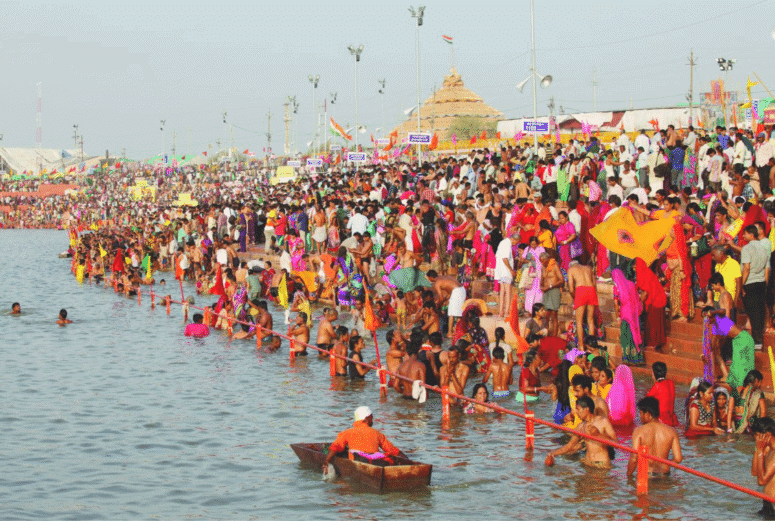
Kumbh Mela
Short Answer Questions
Q1: Explain the role of the government in regulating markets.
Q2: How does demand affect prices in a market?
Q3: What are the key features of a wholesale market?
Q4: What is the significance of the Kumbh Mela in India?
Q5: How does the online market differ from the physical market?
Match the Following
(Match Column A with the correct option in Column B)
